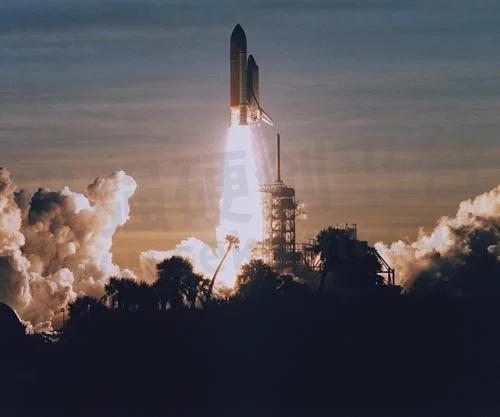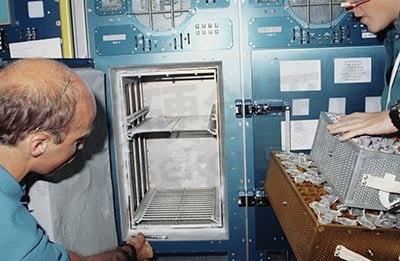The BOYD Solution for Cryogenic Applications Temperature Control

Introduction to Cryogenic Space Applications
The ongoing development of space-based communications, sensors, and
experiments, as well as the evolution of spacecraft electronics, are
driving demand for tighter thermal control and more efficient heat
removal in low temperature microgravity environments.
NASA’s goal was to develop reliable Refrigerator/Freezer (R/F) modules for future Life and Biomedical Sciences spaceflight projects. To do so, they sought to identify, develop, and demonstrate the complicated key Refrigerator/Freezer technologies required for these advanced R/F modules.
Traditional thermal management solutions such as air or liquid cooling are not viable options in space applications. Instead, BOYD developed passive, two phase cooling solutions specifically designed for cryogenic applications for NASA to test during space shuttle missions.

The NASA Cryogenic Temperature Control Challenge
NASA was developing the Stirling Orbital Refrigerator/Freezer
(SOR/F) experiment to prove out technologies that would enable reliable
refrigeration during orbital projects. The subsystem candidates for the
SOR/F were to be tested on Space Shuttle Discovery (STS 60).

The Boyd Solution for Cryogenic Temperature Control
As there is little to no atmosphere
in space, dissipating heat into ambient air is not an option for
effective thermal management solutions. Radiation is the most reliable
cooling method in space, but internal components may not have access to
radiation surfaces.
Boyd has pioneered the development of cryogenic heat pipes and loop heat pipes designed for use in microgravity environments. Engineers from Boyd have demonstrated a wide range of heat pipe/fluid systems for cryogenic thermal management, including helium at -270℃ (3K), hydrogen at -250℃ (23K), neon at -240℃ (33K) and oxygen at -220℃ (53K).
Boyd, known then as Thermacore, recommended that NASA use cryogenic heat pipes to transport heat on the SOR/F experiment. Boyd designed and fabricated copper and acetone heat pipe assemblies for NASA to test on the Space Shuttle Discovery.
The Results of the Stirling Orbital Refrigerator/Freezer Test
The acetone working fluid enabled the heat pipes to function in
operating temperatures between -30°C (243K) and -60°C (213K) during
Discovery’s STS-60 mission. The SOR/F heat pipes were proven capable of
removing up to 10 W of power in the microgravity environment of space.
- +1 Like
- Add to Favorites
Recommend
- Laird Thermal Systems Custom Solutions for Cooling Medical X-ray Imaging Equipment
- Data Center Installations: In-Rack Cooling or In-Row Cooling?
- Infineon Continues to Partner with Boyd to Develop Improved Systems and Solutions for Cooling Electronics in HEV/EV
- Delta, The World‘s No. 1Leader in Brushless DC Fans and Cooling Solutions,Signed an Authorized Distribution Agreement with Sekorm
- Delta Pulse Width Modulation PWM Fans Have Advanced Cooling Solutions, Deliver Best Performance and Greater Effciency
- Rogers Germany GmbH Receives TOP 100 Seal for Successes in Innovation,Which Has Made a Name for Itself in the Field of Ceramic Substrates and Cooling Solutions
- Alliance Memory Introduces Two New Industrial-grade Embedded Multi-media Card (eMMC) Solutions
- YINT‘s Solutions Protect Two Automotive CAN Bus Lines from the Damage Caused by ESD and Other Transients
This document is provided by Sekorm Platform for VIP exclusive service. The copyright is owned by Sekorm. Without authorization, any medias, websites or individual are not allowed to reprint. When authorizing the reprint, the link of www.sekorm.com must be indicated.





























































































































































































































































































































































































































































































































































































































































































































































































































































































